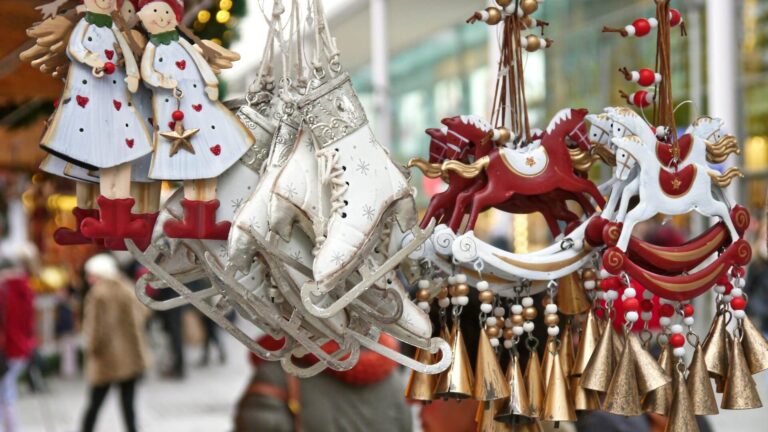
If you need a freelance travel writer or you would like to see your country, city, flight, etc., presented on the blog, drop me an email.
Find our more on Freelance Travel Writer page.
Before we even begin our story on things to do in Sjenica Serbia, we just have to consider the local weather. When one visits at the beginning of spring, in the time of blooms and blossoms, this is where one probably comes across heavy snow. Jadovnik Mountain will still be white, and the road toward its peaks might just be impassable. (That’s how it was when I visited.) It’s always colder out here compared to other parts of Serbia, so prepare yourself for a few mornings below zero.
FROM BELGRADE: about 245 km
FROM NIŠ: about 240 km
And here is why. The town of Sjenica is located in the Pešter Plateau with an altitude of about 1,000 meters. You don’t have the sense of its height given that you are surrounded by mild hills and you don’t have to climb anywhere. Still, when the wind blows over the hills at this altitude – stretching for thousands of hectares – you will feel it in your bones. (Even in April!)
Pešter Plateau
Pester Plateau was declared a Special Nature Reserve in 2016. It covers 3,118 hectares, developing a unique habitat complex with diversity in flora and fauna. It’s 45 km away from the town, with Trojan being the highest peak (1,430 m). Due to its specific geography and climate, the Pešter Plateau is also known as Serbian Tibet in summer or Serbian Siberia in winter.
This plateau is the biggest of its kind in the Balkans and one of the largest in Europe, with an altitude of about 1,150 m. During the 1950s, the lowest recorded temperature was minus 39 degrees, which is the lowest ever in Serbia. The average annual temperature is about 6 degrees, while snow persists for 60 days a year.
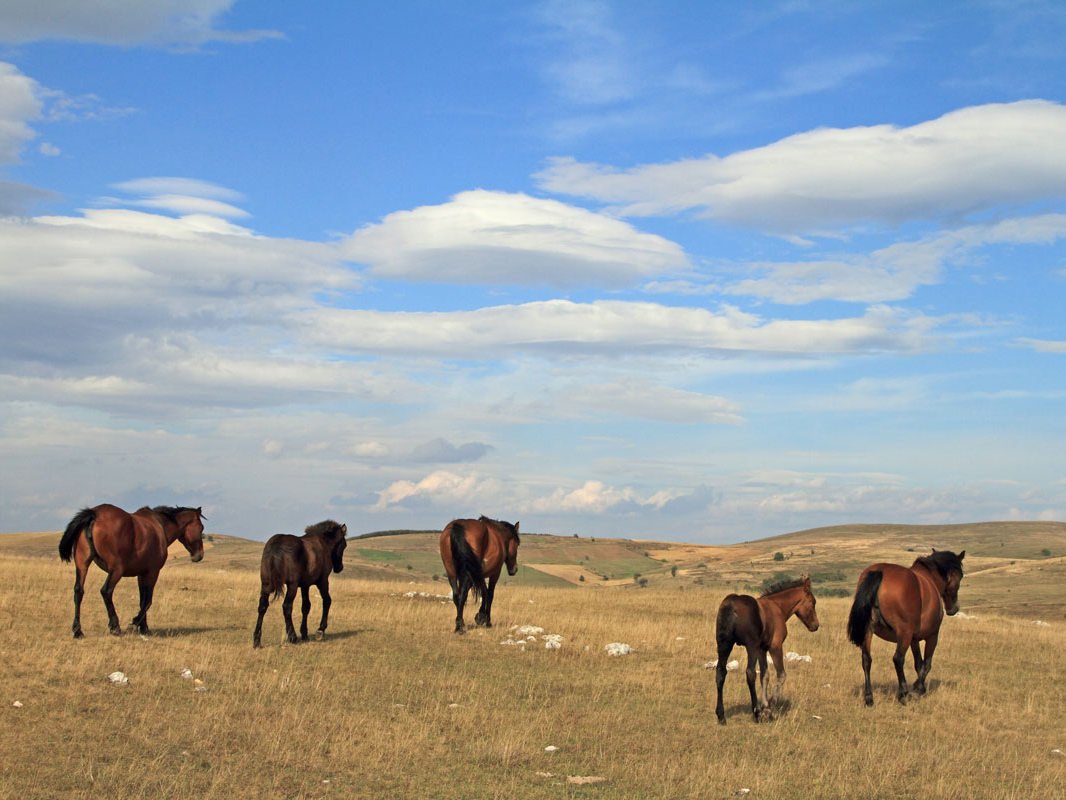
The Special Nature Reserve was our first stop. You get impatient to see the famous hills in person that are usually adorned by flocks of cows and sheep, with various herbs and flowers. Even though Pešter was once covered in pine trees, which led to the formation of vast peatland, there is not a single tree in sight today. That’s probably one of the reasons these hills look so mild. Also, this is the largest peat find in the Balkans, and they say that 95 percent of all the flowerpots’ soil in Serbia actually came from Pešter.
We drive towards Trojan, the highest point at 1,430 m, while Milorad the ranger tells us how Pešter itself is 1,030 m high. Trojan is related to various interesting stories. They say that it was named after an ancient nobleman and that in the Pešter Lake below, a three-headed dragon once lived. As it emerged once a year taking one person from the village, when the time came for the nobleman’s daughter to be sacrificed, he called out to famous warriors and knights for help.
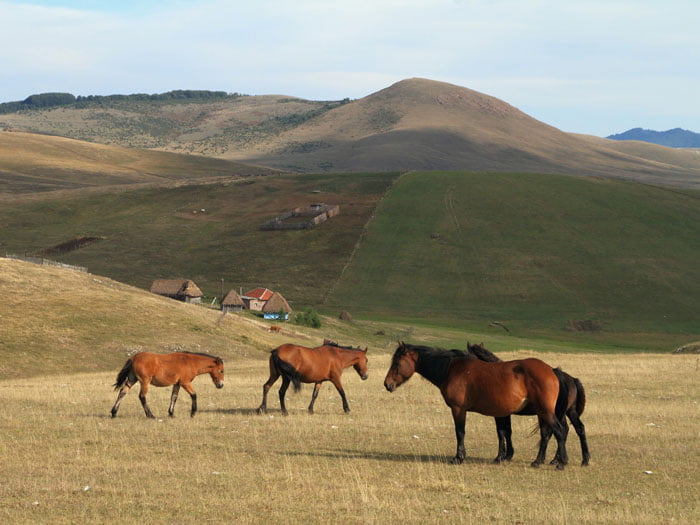
This is when St. George comes to the scene, as he was among those who answered. As he struck the stone in the foothill to try out his sword, freshwater sprung out. The spring, known today as Đurđevica, is the only spring in the entire plateau, one that never dries or freezes (even though the temperature can often go below minus 30), and one that gathers people from surrounding villages. They showed me human footprints in the stone, along with horse hoof traces… If you wonder about things to do in Sjenica, Serbia, this spring should definitely be one of the stops.
As the story continues, St. George beheaded the dragon. The legend stuck with locals through time and so, surrounding villages got somewhat symbolic names.
“Where the dragon swung its tail and broke trees,” says Milorad, “that’s where the village Krnja jela (Broken Fir Tree in a rough translation) stands today.”
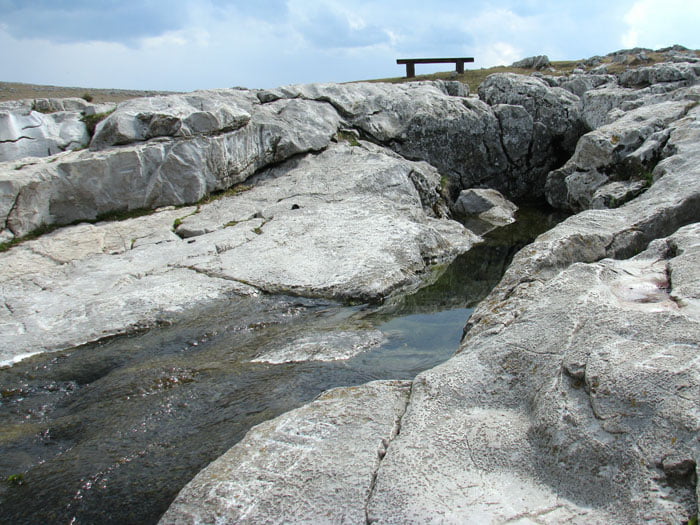
One of the heads is somewhat of an enigma, and Željko from the Tourism Organization of Sjenica tells me about the British team that actually came a couple of years ago to investigate the fact that one of the British lords has a dragon head presented on his coat of arms, the one that allegedly originated from Pešter. The legend says that the head was taken to Great Britain by knights.
The Trojan hill is not immune to stories either. This is where a large fortification once stood, and the story goes that the wealthy nobleman buried his riches in the underground cellars. That is why treasure hunters still dig here from time to time.
It is possible to organize a tour of Trojan with the local Tourism Organization or the Reserve. You can hike to the top, take a jeep ride, or cycle through the Pešter Plateau.
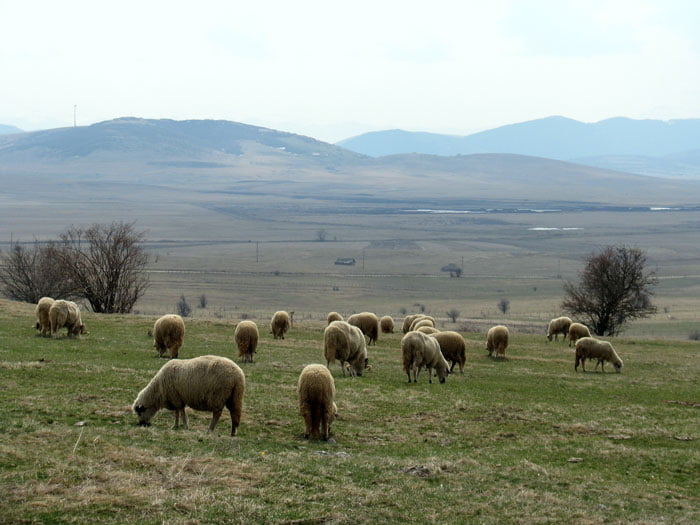
We are on our way to see small houses called “stanovi” or “katuni,” specific cattleman’s places without water or electricity, where they dwell over summer for as long as their cattle are able to feed outside. Thus, milk and cheese are of exquisite quality, given that the cattle are grazing on pastures filled with herbs. (There are 1,230 species of medicinal herbs in Pešter!) I was told that I should expect a cattleman to talk a lot if we happen to come across one since they are here for months without seeing another human or even speaking to one.
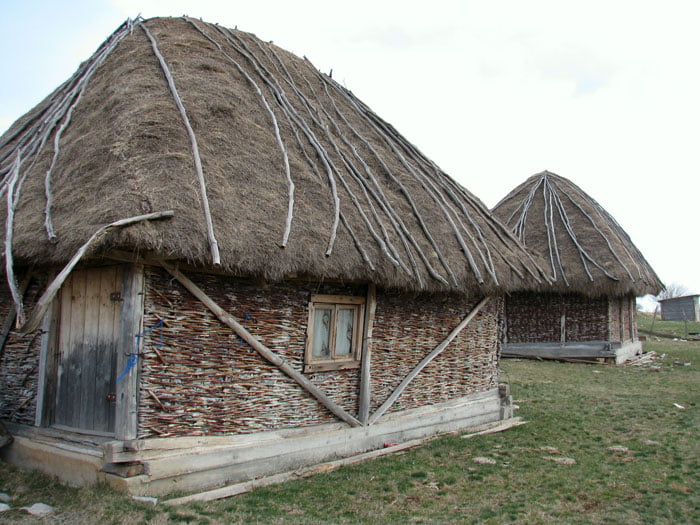
And so, on one of the hills, we were welcomed by a young man in his early 20s. His name was Enver, and he was talking about himself, his flock of sheep, how seven years ago “a great roar was heard from the abyss where a few bulls fell in long ago” (“Or maybe it was a dragon’s roar,” Željko adds). Enver doesn’t like to be photographed, but when we mention that some girl might see him that way, he blushes, and smiles widely, showing us his strong white teeth.
“It would be better to bring her first, so that she can see if she likes it here or not,” he says modestly.
While we were saying goodbye to Enver, I found out that every August 2 when St. Elijah is celebrated in Serbia, there is a local festival that gathers people from remote villages. This is where business deals are agreed upon and marriages are arranged. Also, all the wealth of local cattlemen comes to light, since girls to be wed wear jewelry with ducats that range from 10,000 to 100,000 Euros.
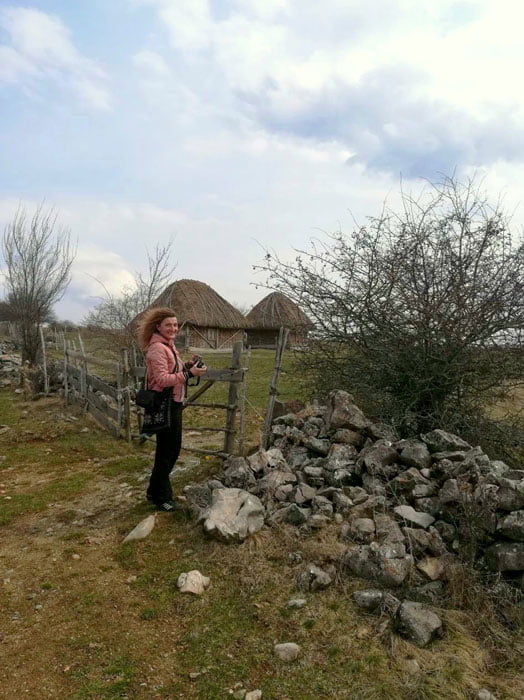
Our trail takes us to the Pešter Lake. This is the place to be in May, early in the morning, when so many bird species come around, all singing and bathing. The Reserve is renowned for housing 99 protected species of birds. Also, a few rare orchids grow here at the beginning of June.
It wasn’t that dynamic when we visited. The grass was yellowish with no colorful flowers yet, but the clouds’ reflection on the lake surface was beautiful. Even though they said that I came early and that I should definitely visit again during summer when everything turns green, I liked these calm yellowish hills. The surreal, wavy landscape seemed to be stretching indefinitely!
Sjenica Serbia
This is the third-largest municipality in Serbia, with a population of 34,000. Located in the mild valley of the Pešter Plateau in southwestern Serbia, the town itself is populated by 16,000 people and lies at an altitude of 980 meters.
Caravans traveling from Dubrovnik to Constantinople used to stop here to rest their horses. Sjenica is first mentioned in 1253 as the place where merchants came to declare goods and pay revenues. It has often been cut off from the rest of the country by heavy snowdrifts. This remains the coldest area in Serbia.
You can’t miss the Molitva viewpoint when you visit. Four rivers – Grabovica, which flows through the town, Vapa, Jablanica, and Uvac – form the famous Sjenica (or Uvac) Lake. You need to drive 15 km from town to reach this observation deck. The Molitva terrace stands 110 meters high and provides one of the most unforgettable views over the popular Serbian Uvac meanders and the gorge that begins 7 km away. (I had the opportunity to visit Uvac several times along with its viewpoints on both sides of the lake namely Molitva, Veliki Vrh, and Ravni Krš.)
There are several other stops one should make to the nearby mountains: Golija and the tourist center Odvraćenica at an altitude of 1,744 m, or Jadovnik with its highest peak Katunić at 1,734 m. They say that on clear days, the view reaches all the way to the sea, which is at an aerial distance of about 150 km. If you prefer Nordic skiing, there is a ski center available with the only ski slope of its kind in the region.
Try to stop by the watermill on the way to the Uvac gorge, where the springs are. Water bursts out of the hill, tumbling down in several separate streams that reunite in the foothill. The watermill is still operational. The current owners say their family bought it in 1823 and haven’t changed a thing.
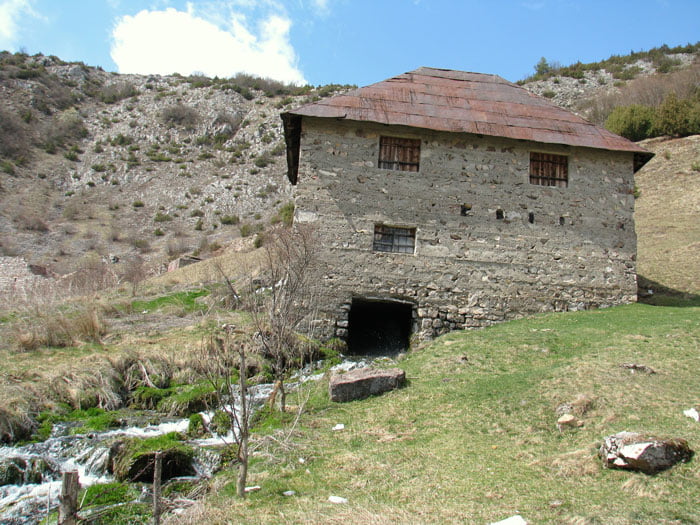
It was time for a break, a perfect opportunity to explore the springs, take some photos, and have a sandwich. On the opposite hill, a white horse was grazing. I couldn’t have guessed that on our way to the Pešter Reserve, we would see dozens of horses resting next to the forest. Not far from here is the Borovi Hotel, which was under renovation at the time but is now one of the most renowned in the entire region (highly recommended—an excellent hotel where I tried buffalo milk cheese and visited an authentic Turkish bath—click the link). Even back then, we stopped by for coffee served in a fildžan with a side of ratluk (Turkish delight).
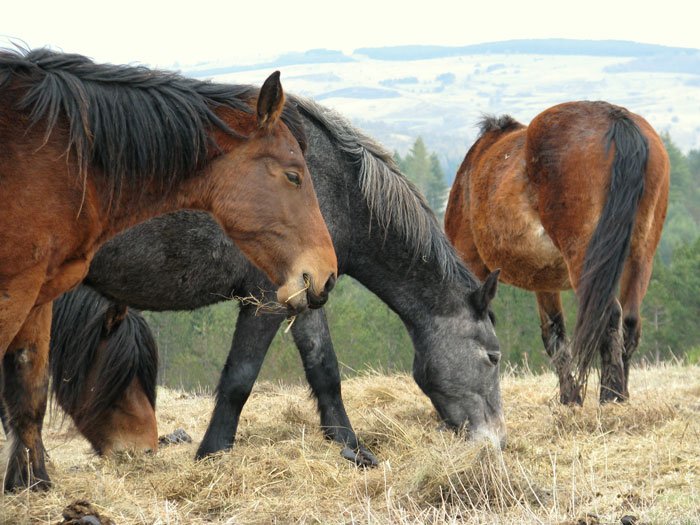
One of the landmarks of Sjenica is the 19th-century Sultan Valide Mosque, the endowment of Sultan Abdul Hamid II’s mother. (Add this to your things to do in Sjenica Serbia bucket list.) The dome is 15 meters in diameter and is built without any supporting columns. The building is a true witness to the golden era when Sjenica was the center of Sandžak, the municipality area within the Ottoman Empire, and it is the only royal mosque in Serbia.
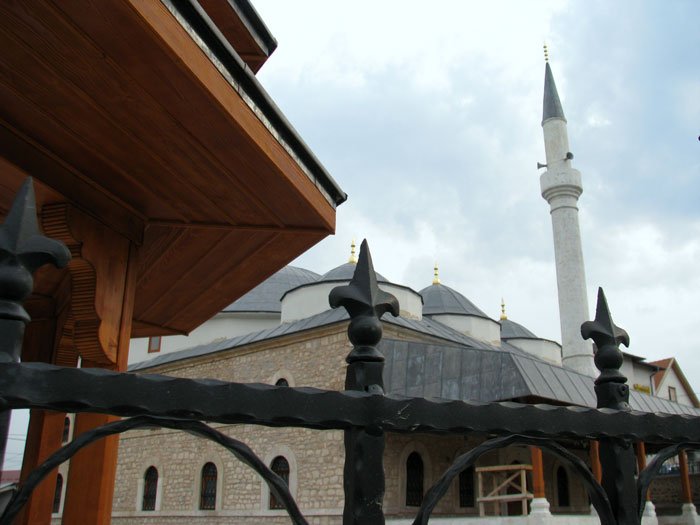
There is also the St. Peter and Paul Church to be seen in town, though when it comes to religious monuments, locals often suggest visiting the interesting 13th-century Kumanica Monastery, which is a short drive away. (See the post about Prijepolje Serbia for more about the monastery.)
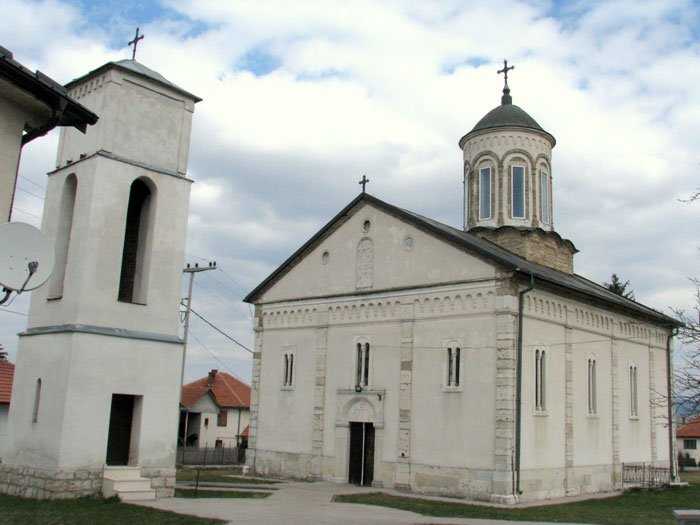
I spent a couple of afternoons in town and had the opportunity to stroll across the central bridge with a view of the future museum Sjenička Kuća. On both sides of the street were restaurants and cafés. I usually had lunch at the Vanilla Hotel where I stayed, and the afternoons were reserved for my laptop and coffee.
(When it comes to accommodation, you can stay right in the town or closer to Uvac, where the meanders will practically be at your fingertips. Take a look, for example, at these lovely cottages, tucked away from the hustle and bustle of the city.)
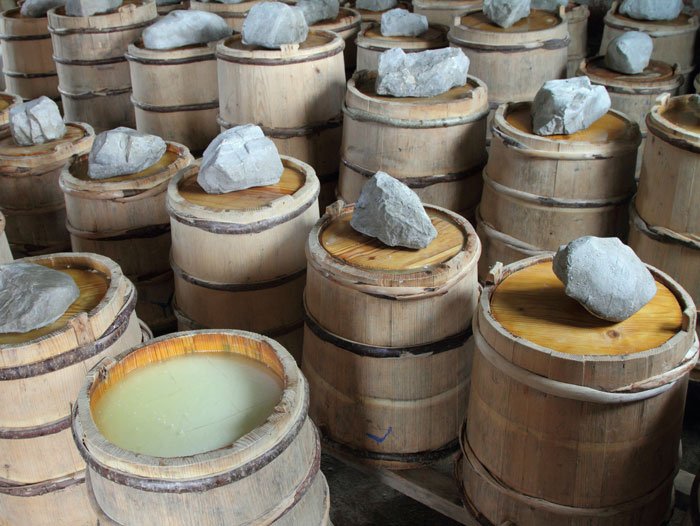
Željko and Milorad mentioned some traditional specialties of the area – famous white cheese, “pršuta”, “sudžuk”, paprika in milk cream, “mantije”, and various pies (there is even a festival dedicated to Sjenica’s traditional pies in August). People from the hotel helped me find some homemade “mantije” (small wrappings with meat) that I wanted to bring back home, and also suggested a couple of pastry shops.
We planned to visit Jadovnik if possible, but while I was there, the road was impassable (just take a look at the video below!). Do you remember the stories about winter and snow in Sjenica and the surrounding area?
I stopped by the Kobra pastry shop, asked about the traditional sweets, and received “kadaif” and “tulumba” on a tin plate. The sugar syrup was pouring down from both! Oh, and I couldn’t resist asking for “poljubac” (kiss) as well. (It’s not what you think – that’s the name of another cake, all white and dipped in coconut flour.)
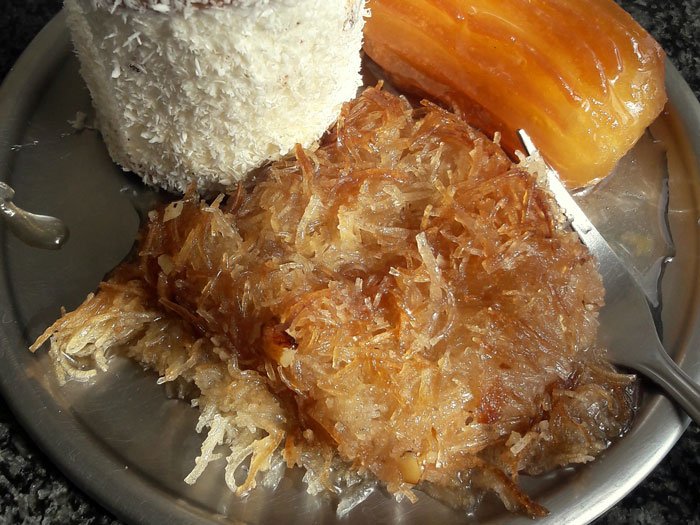
It wasn’t possible to eat all three, especially because I wanted to visit one more pastry shop called Sandžak. The owner there told me it was a market day and that he had almost sold out. “But there is one left,” he smiled and pulled out a piece of “tres leches” with the original caramel topping. (Those who know me will understand my joy.)
Then I decided: next time I’m coming to Sjenica in August to try the pies! And then to take a stroll with a bite or two of those delicious sweets again.
Next in the series: THINGS TO DO IN NOVI BEČEJ SERBIA
The full THINGS DO TO IN SERBIA section
PIN IT FOR LATER:
If you need a freelance travel writer or you would like to see your country, city, flight, etc., presented on the blog, drop me an email.
Find our more on Freelance Travel Writer page.
I am looking forward to working with you.
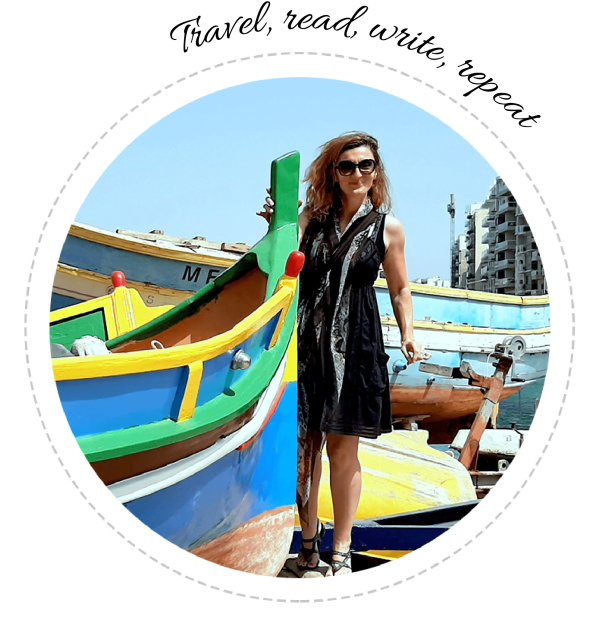



18 responses
Didn’t know anything about Pester. Judging by your photos, it really does seem indefinite. Would love to see these hills in person. ????
Those hills really are mesmerizing. When looking at them it feels like there’s nothing beyond.
And it can get seriously windy! 😀
Wow! Hard to believe it gets so cold there! what fascinating stories!
Hey, thank you, so glad you like them. 🙂
Yes, it gets really cold, so unlike the rest of the country or the Balkans.
I love the story about how the slayed dragon swung its tail and took down the trees! it looks like a facinating place to visit – would love to see all those sheep.
Those stories are what make the place even more interesting. I really enjoyed them. 🙂
This looks like my kind of place — adorable animals, gorgeous scenery, cool museums, and delicious food! Would LOVE to visit!
I’m sure you’d enjoy the place. There really is a lot to see and experience. Thanks. 🙂
What a fascinating post! Love all the landscape, wild life and food photos. You have Such an interesting perspective on your journeys.
Thank you. I do enjoy traveling like this, covering things to see and do, but also learning some local stories and legends. That’s always the best way to get to know the place. And there’s usually some delicious traditional specialty to taste. 🙂
So Turkish Delight isn’t just something from Harry Potter? I love all the myths and stories surrounding this place. it may be the perfect place to visit this year, as maybe some travel can be done in late summer, which I assume would be like spring then?
Late summer is still summer, nice and green. 🙂
Hope all this with corona ends soon so that we can all travel again. Thanks, Jamie, stay safe. <3
When it comes to serbia, belgrade is the only city i’m familiar with. now i know two places to see when i visit!
There is ‘Weekend In Serbia’ section on the blog if you want to know more. There really are some extraordinary things to see in this country.
Thanks, Brian. 🙂
Loved the story of St. George and the dragon and the food descriptions – it’s so helpful to hear what is what when you’re not familiar with these items. Photographs are lovely too.
Such stories always give some additional mystic to the place, don’t you agree. 🙂
So glad you like the post, thanks. <3
Love horses. Got to go to horse camp in Poland for 2+ weeks before. Love the view in Molitva, looks amazing.
Thanks. 🙂
Oh yes, the Molitva observation deck provides one of the best-known views in the country. Uvac Reserve is very popular among nature lovers.